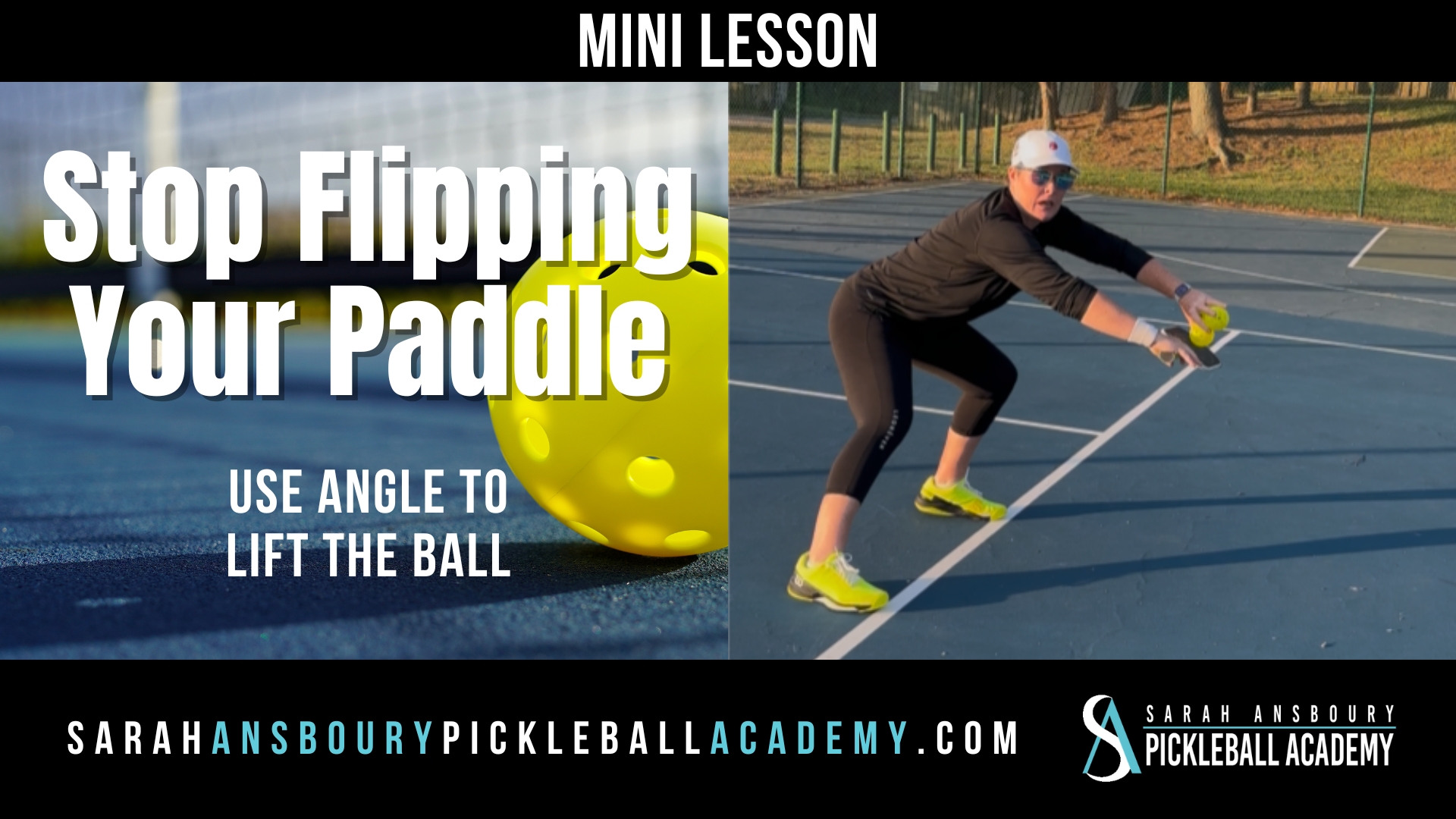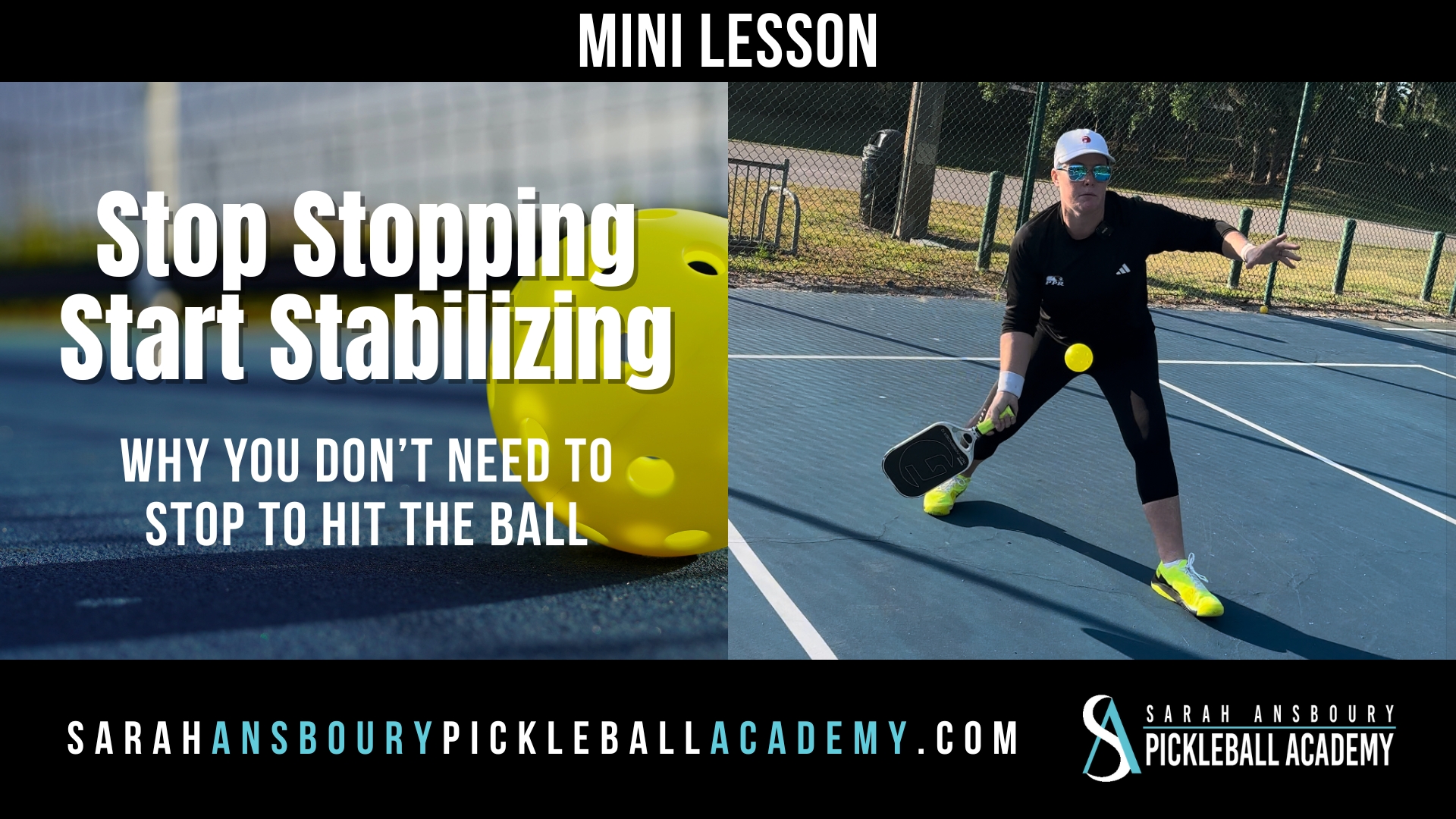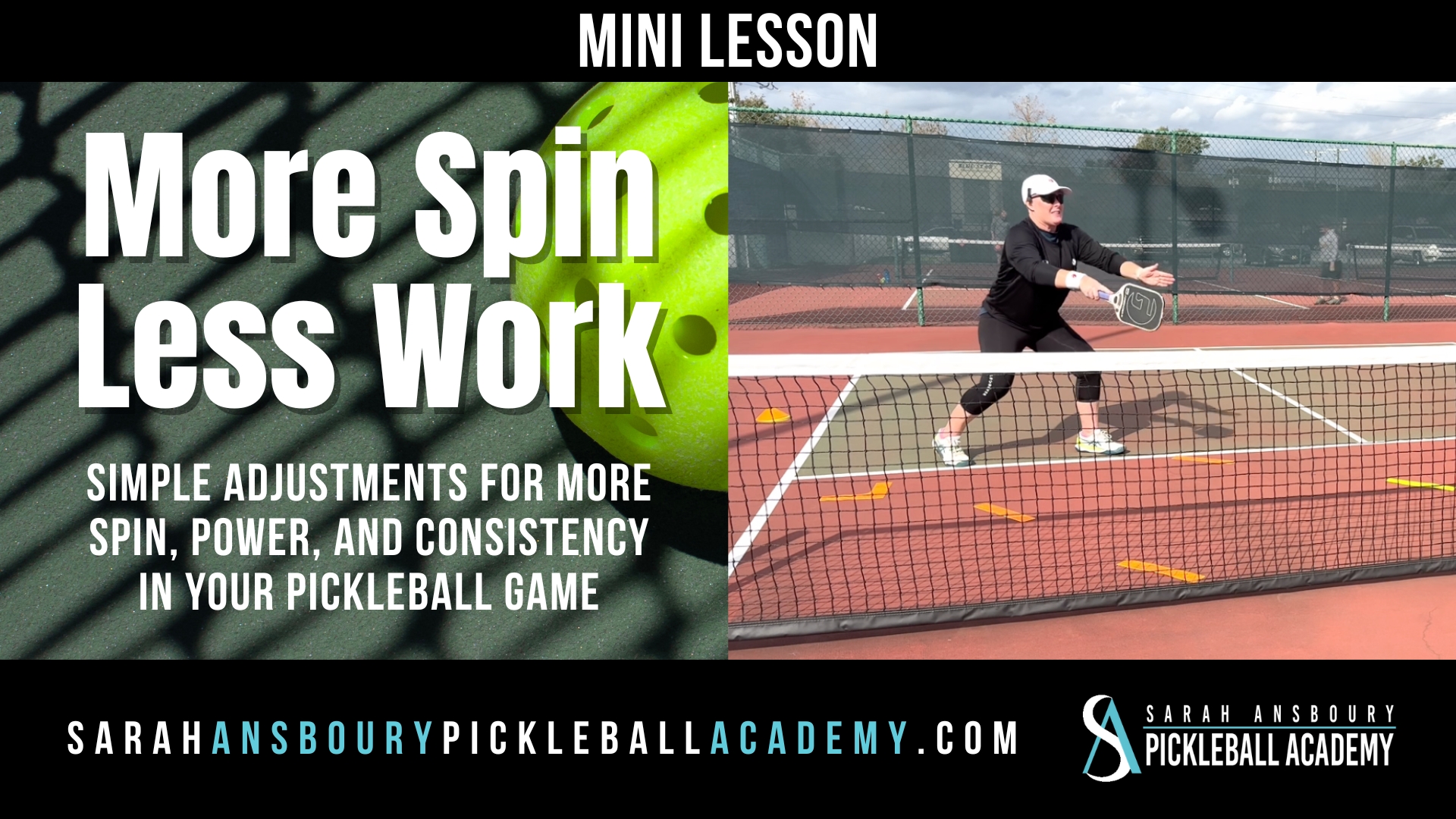Almost all new players fall into one of pickleball’s biggest pitfalls…letting the ball bounce. Instead, learn to dink in the air.

new players
Whenever I work with new players, I find their tendency is to step back and let the ball bounce. Unfortunately, this tendency can result in the player remaining a foot or so away from the line. It can also result in pop-ups as the player moves their body as they attempt to hit the ball. Instead, all players must learn to dink in the air. Whenever you can hit the ball before it bounces you have an advantage:
- With time you will improve your consistency at the line;
- By hitting the ball before it bounces you are taking time away from your opponent;
- You are maintaining your position at the line.
dink vs volley
While I realize the classic definition of a volley is hitting a ball that did not bounce, there is a difference between a dink in the air and a pickleball volley. A volley is typically hit with more power. For this shot, I want to hit the ball softly.
Keys to dinking in the air
Often players are worried that they will pop the ball up too high when they don’t allow the ball to bounce. To hit the dink in the air most effectively, we need to focus on a few key areas:
- STOP!: You must be stable, balanced, relaxed, and comfortable to hit this shop effectively. Too
 often players have a tendency to shuffle too much when they are at the non-volley zone line.
often players have a tendency to shuffle too much when they are at the non-volley zone line. - Proper Posture: When in your neutral (or ready) position stand tall. Keep your head up and your chin away from your chest. Extend your arms away from your body. Make sure your elbows are not touching your body. Your paddle should extend above the non-volley zone.
- Small Swing: There is no need for a big swing when you are dinking in the air. Your backstroke can be only one or two inches. I think of it as hitting a short putt in golf. The key is to take a short backswing but keep your paddle extending pass the ball toward the target.
practice
My ideal contact point when hitting this shot is above my knees. I need a soft grip and soft knees. When practicing we play a short court game. The mistake some players make is making this practice into a “kitchen game”. If the non-volley zone line is your boundary you will constantly be stepping back or looking down to see if the ball is “out”. Instead, I would recommend that you make your boundary (i.e. the out balls) a few feet behind you. This will encourage you to dink in the air.
I










